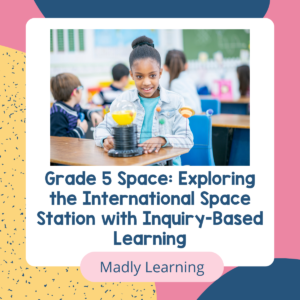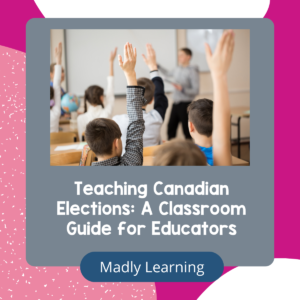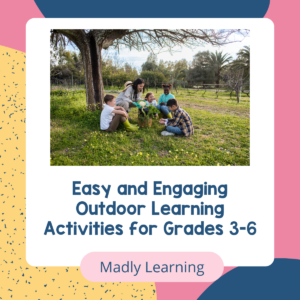
Whenever I check the teacher message boards that I am a part of, I always see many requests for ideas for culminating tasks for the various units that a teacher teaches throughout the year. This stems, I believe, from the backward design process where teachers begin to plan their new unit of study by first planning the culminating activity. However, if you follow this blog, you may have realized that I am moving away from the teacher-directed model of instruction and moving towards an inquiry approach where the students and teachers authentically develop the culminating task within some standard parameters.
The problem, as I see it, is not in having a culminating task but in planning an event or task that limits a student’s creativity or expression in order to do what the teacher tells them. Placing restrictions on what students do to show you what they learned is where you are restricting student creativity. I know that there is a lot of anxiety as teachers when we don’t have complete and total control. I get it, I myself am a recovering control freak (ok maybe not so much recovering), but I have changed the aspects that I control within the classroom. At the end of the unit, if every student’s product looks the same then how creative and differentiated is that really.
1. Plan the criteria, not the product
It is possible for students to design a variety ways to show their learning that respects their interests and individuality while all still meeting the same expectations. These little projects are called “show what you know” projects. With these we make a list of concepts that student need to know about these are generally derived from our learning throughout the unit. It is then the student’s responsibility to design a project that meets these criteria. How they present it is not as important as what they present.
2. Fun means differentiated
Many times as teachers are requesting help to find project ideas, they are also requesting fun and engaging activities for their students. Generally, as teachers, we are not interested in boring our students and making learning disengaging. However, we teach individuals, not robots and their interests are their own. If you want them engaged, let them choose the format. At first, many students will probably pick traditional presentation strategies. However, throughout the year as one or two students begin to push the traditional boundaries other students will start to take more risks in their style to pursue their own interests that reflect their skills. We have to remember that in our classrooms there are many students who have strengths in different areas and those that do not fit well in a traditional classroom will struggle with traditional tasks but can and will amaze you with their ability to show you what they know in alternate ways such as using Minecraft, designing a song or dance, or creating a website.
3. Student-led inquiry
Inquiry means that students are helping to lead and own learning. They are not leading their learning if where they are going and what they are doing is already mapped out. This does not mean that we don’t have to plan because we do. There will be certain concepts that are essential to building their knowledge and understanding that they can learn what it is that they are supposed to learn. However, these are general. If you have ever seen my units on TPT you will know that they generally follow the same format. Provocation/Wonderwall-> Big Idea / Questions -> Building Background Knowledge and Understanding Lessons-> Knowledge Building Circles -> Reflecting Activities -> General Research Project -> Open-Ended Sharing of Knowledge. You will also notice that the pages are general enough that there are very few questions and answer rote learning pages. Students are generating their own knowledge and reflecting on this. However, the focus and scope of these lessons allow a variety of different avenues and flexibility for the teacher so that each year your focus could be a little different. The shift relies on the teacher understanding that they are guiding the learning not giving the learning.
4. Share the workload
there is a quote that is often used with inquiry that talks about the workload. The teacher should not be working harder than the students. In reality, this is true. If you are working so hard to plan every little detail then simply just giving the students work. This is not inquiry. Inquiry involves students and teachers working together. If you want an engaging activity for your students, ask them to tell you what they should do. Plan it together. Instead of taking hours and hours at home planning a lesson for students. Stop planning at home and plan with them during knowledge building circles. Even if that means that you pull out the curriculum document and list the things that they need to know about and asking questions about these things and then going from there. Let them help you plan it. Do it with them, and save yourself some time.
5. Learn the content, deeply
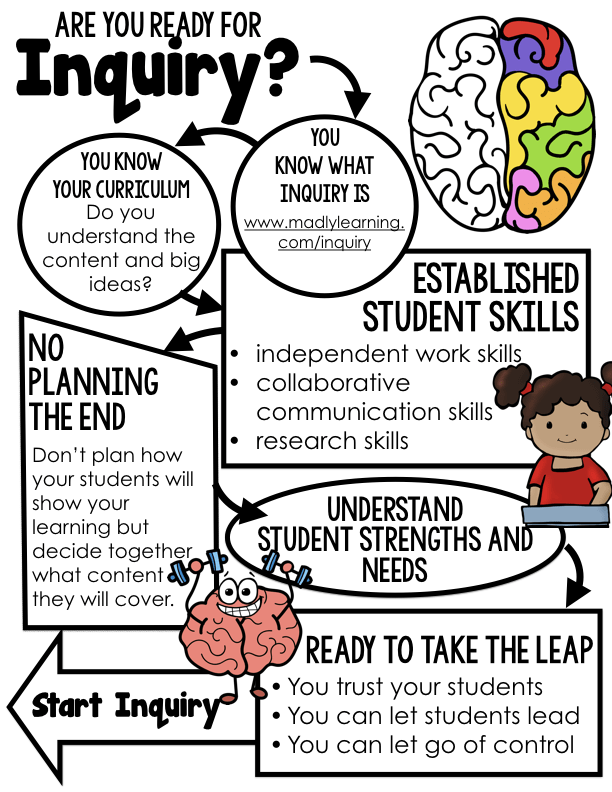
This has to be the biggest advantage for me in planning detailed units for TPT. It has forced me to really learn the content. Stop spending your time planning the unit and the lessons and learn the content and not at an elementary level but at a high school level. Read the Wikipedia page on tension and compression and challenge yourself to be able to understand it. This will help you when you go off script in class. If all you know is what is on the lesson plan then it will be that much harder to teach this using an inquiry perspective. You need to know your content at a much more complex level. This is why it takes me so much longer to create a complete unit and why I include teacher background notes for you so that you can understand the concepts that you teach.
Are you ready for inquiry? Use this quick checklist to help you get started and plan ahead for inquiry. It’s in my free resource library along with many other tools that you can access free. Just sign up below.
If yo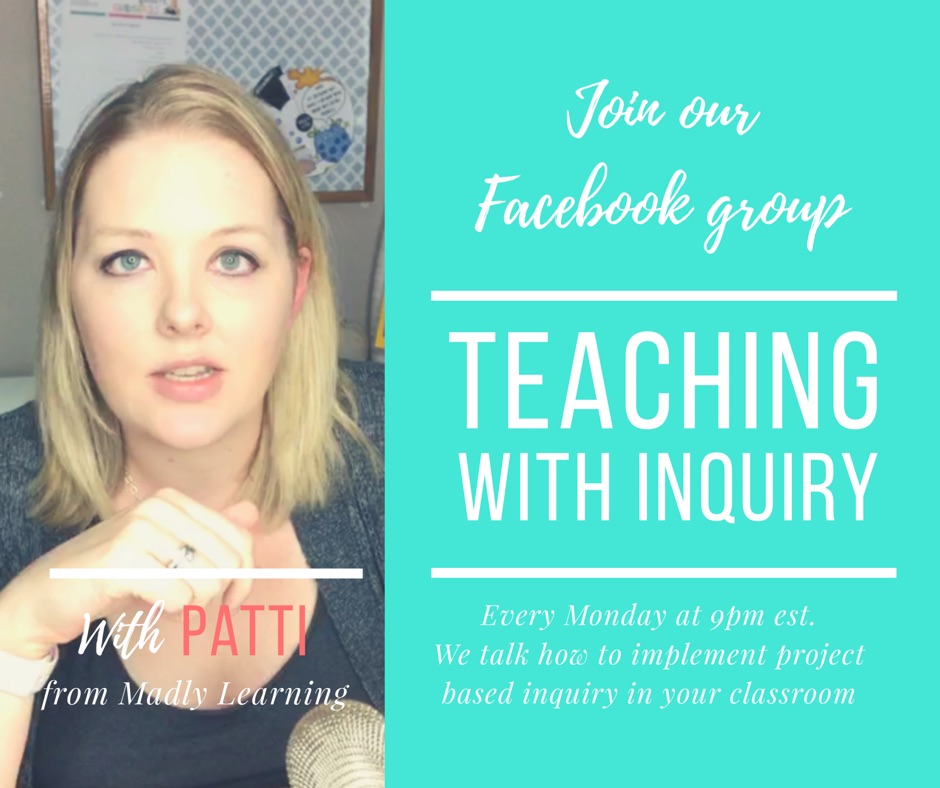 u want to connect with me about inquiry why not join me on Facebook inside my Teaching With Inquiry Facebook group. Join the conversation every Monday at 9 pm as we talk about all things inquiry and teaching.
u want to connect with me about inquiry why not join me on Facebook inside my Teaching With Inquiry Facebook group. Join the conversation every Monday at 9 pm as we talk about all things inquiry and teaching.


